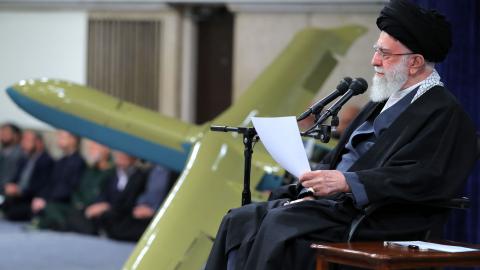As “Master and Commander,” the 2003 movie based on Patrick O’Brian’s extraordinary historical novels, reminded us, the key to victory in the Age of Sail was to have an advantage that sailors called the “weather gage.” Thanks to the wind’s direction, one side could dictate the timing and pace of the battle. When you wanted to engage the enemy fleet, the wind allowed you to approach. When you wanted to back off, the wind prevented the enemy from closing in.
What’s clear in the Middle East these days is that Iran has the weather gage. Iran can spark a crisis whenever and wherever it wants and can also de-escalate at will. From Iraq to Lebanon and Gaza to the Red Sea, Iran and its proxies can create an instant crisis anywhere, forcing the U.S. to respond on Iran’s timetable. Even when, as over this weekend, Team Biden responded to Iranian attacks with force, Tehran was essentially in control. Rather than thinking about how to deliver an unmistakable message that will restore deterrence across the Middle East, the administration struggled to find a Goldilocks retaliation strategy: strong enough so centrists don’t call it weak at home, weak enough so that Iran won’t escalate in return.















